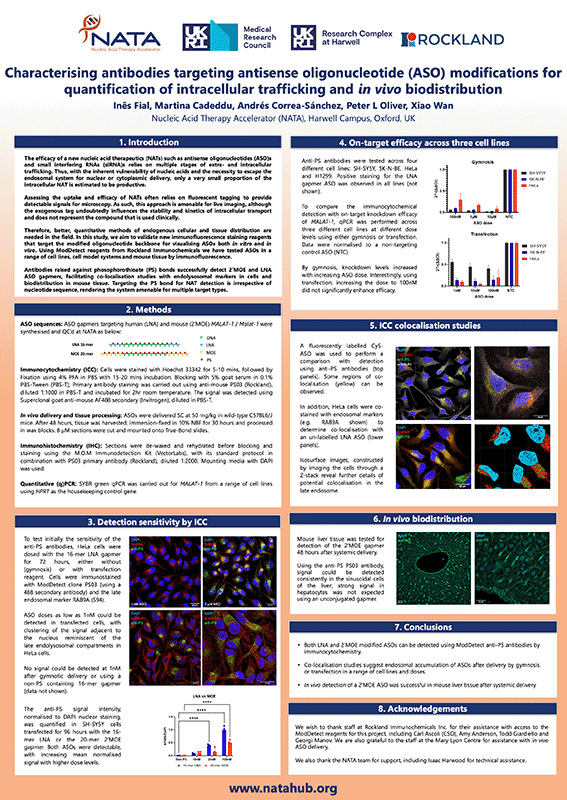Characterising antibodies targeting antisense oligonucleotide (ASO) modifications for quantification of intracellular trafficking
The efficacy of a new nucleic acid therapeutics (NATs) such as antisense oligonucleotides (ASO)s and small interfering RNAs (siRNA)s relies on multiple stages of extra- and intracellular trafficking. Thus, with the inherent vulnerability of nucleic acids and the necessity to escape the endosomal system for nuclear or cytoplasmic delivery, only a very small proportion of the intracellular NAT is estimated to be productive.
Assessing the uptake and efficacy of NATs often relies on fluorescent tagging to provide detectable signals for microscopy. As such, this approach is amenable for live imaging, although the exogenous tag undoubtedly influences the stability and kinetics of intracellular transport and does not represent the compound that is used clinically.
Therefore, better, quantitative methods of endogenous cellular and tissue distribution are needed in the field. In this study, we aim to validate new immunofluorescence staining reagents that target the modified oligonucleotide backbone for visualising ASOs both in vitro and in vivo. Using ModDetect reagents from Rockland Immunochemicals we have tested ASOs in a range of cell lines, cell model systems and mouse tissue by immunofluorescence.
Antibodies raised against phosophorothioate (PS) bonds successfully detect 2’MOE and LNA ASO gapmers, facilitating co-localisation studies with endolysosomal markers in cells and biodistribution in mouse tissue. Targeting the PS bond for NAT detection is irrespective of nucleotide sequence, rendering the system amenable for multiple target types.
